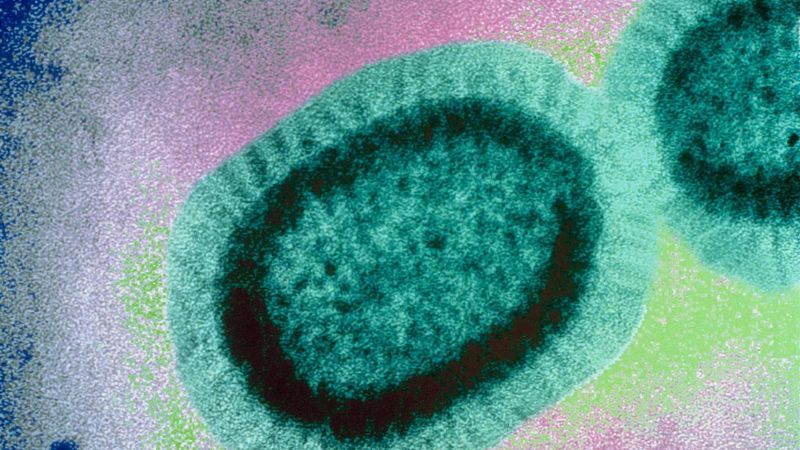Defending flu vaccine coverage rates to help protect the most vulnerable

After decades of public health campaigns, an important part of the older adult population had finally started to get vaccinated against the flu each year. But COVID-19 vaccine fatigue may be eroding the public health community’s hard-earned gains in flu vaccine coverage.
In our third winter since the COVID-19 pandemic, the respiratory disease season has hit with several respiratory viruses circulating simultaneously. We know that it’s possible to have flu and COVID-19 at once and that having both – or having one infection right after another – weakens the patient significantly and can lead to severe, sometimes life-threatening disease.
We can help prevent flu-related hospitalizations and deaths thanks to vaccines. But too many older adults are just not getting their flu vaccine this season. Rates of flu vaccinations have tumbled more than 5% points in the US since a peak level of 75% coverage among older adults in 2020.1 We see similar trends in major European markets as well, including France, Germany, and Italy, where rates of vaccination have also declined over the last year, and in some cases, not even reaching 50% of the populations.2 While it was observed in scientific studies that both COVID-19 and flu vaccines could be administered together without any safety concerns, little proactive public information has been out to older adults to reassure them on this point.3, 4 The need for older adults to get both the flu and COVID-19 vaccines has perhaps also contributed to creating general fatigue about getting yet another shot.
This is a worrisome trend for the public health community. We cannot control influenza epidemics, but we can mitigate their impact with high levels of vaccination coverage across the population, particularly amongst older adults, as this helps prevent flu-related complications like pneumonia5, heart attacks and strokes.6, 7, 8, 9
It’s important for older adults to understand that in the short term, they should continue getting their once-annual shot, and that they can ask for vaccines developed specifically for their weaker immune systems.10
At Sanofi, we’re deep into the development of a new approach to influenza vaccination, one that we hope will change the game in the future when it comes to getting the flu vaccine. We are working to target influenza strains that could provide broader protection against a vast number of influenza strains, so that no matter what circulates, older adults would be better protected.
Learn more about flu

Influenza

What is a flu strain?

#NoJargon: Dive into the world of science
References
- https://www.cdc.gov/flu/fluvaxview/coverage-2223estimates.htm#:~:text=In%20the%202022–23%20flu,the%20prior%20season%20(49.4%25). Accessed November 2023
- https://www.destatis.de/Europa/EN/Topic/Population-Labour-Social-Issues/Health/Influenza-2.html#:~:text=In%20other%20countries%20the%20vaccination,from%2047%25%20to%2043%25. accessed November 2023
- https://www.sanofi.com/en/media-room/press-releases/2021/2021-10-07-05-00-00-2309981 accessed November 2023
- Reactogenicity of Simultaneous COVID-19 mRNA Booster and Influenza Vaccination in the US | Infectious Diseases | JAMA Network Open | JAMA Network accessed Jan 2024
- Influenza virus-related critical illness: pathophysiology and epidemiology - PMC (nih.gov)
- Kwong, J. et al (2018) Acute Myocardial Infarction after Laboratory-Confirmed Influenza Infection. N Engl J Med 2018; 378:345-353 DOI: 10.1056/NEJMoa1702090
- Ohland et al (2020) Acute myocardial infarctions and stroke triggered by laboratory-confirmed respiratory infections in Denmark, 2010 to 2016. Eurosurveillance Volume 25, Issue 17, 30/Apr/2020 doi: 10.2807/1560-7917.ES.2020.25.17.1900199
- Warren-Gash et al. (2018) Laboratory-confirmed respiratory infections as triggers for acute myocardial infarction and stroke: a self-controlled case series analysis of national linked datasets from Scotland. Eur Respir J.2018;51(3):1701794).
- MacIntyre CR, et al. (2016) Influenza vaccine as a coronary intervention for prevention of myocardial infarction. Heart 2016;102:1953–1956. doi:10.1136/heartjnl-2016-309983
- Johansen et al. A Pragmatic Randomized Feasibility Trial of Influenza Vaccines. NEJM January 23, 2023 NEJM Evid 2023;2(2) DOI: 10.1056/EVIDoa2200206 VOL. 2 NO. 2 https://evidence.nejm.org/doi/full/10.1056/EVIDoa2200206